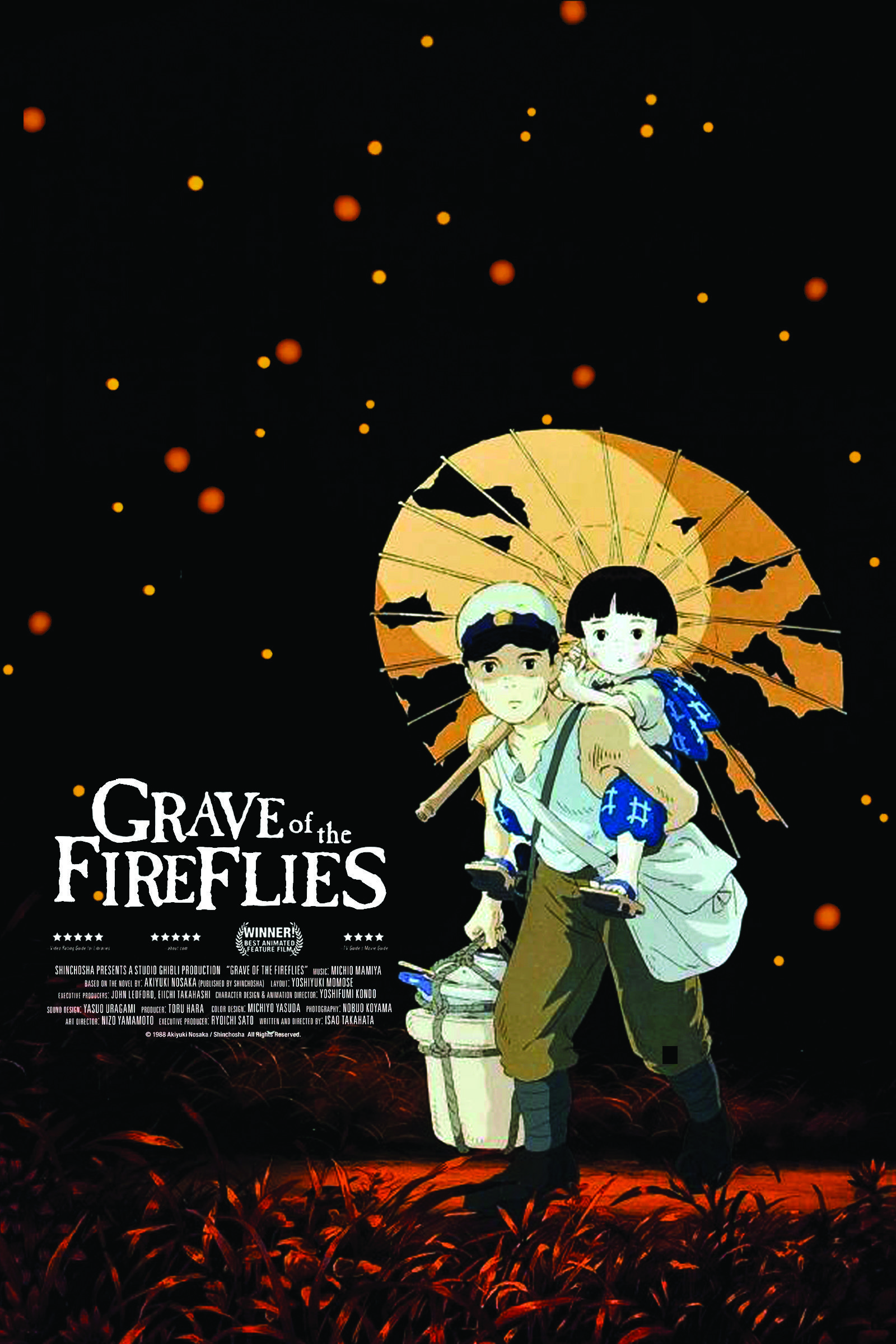Anime Movies: Top 6 Anime Movies That Have Won Awards
Either it's life lessons, emotional impact, emphasis on friendship and relationships, interesting world building, compelling characters, creative visuals or just simply learning about Japanese's history, language and culture, there is something about these big eyed, pointed tiny nose characters that fascinates you and before you know it, you're obsessed with anime, well, who isn't?
If you had just recently discovered the wonderful world of anime, these movies are great starting point.
So in this blog, we're counting down the best anime movies that are critically acclaimed and who've won awards.
what is your best anime movie? let us know in the comments.
Let's begin our countdown with Number 6,
The red turtle won the 2016 Cannes Film Festival's Un Certain Regard special prize, San Francisco film critics circle's best animated feature.
The red turtle also won the 2017 Magritte Award's Best Foreign Film in Coproduction and Annie Awards best independent animated feature.
Number 5,
Miyazaki's last film does have an elegiac feel and it isn't for children. It's set in the decades leading up to WWII but only comments on Japan's growing militarization in passing (despite having some scenes in Nazi Germany). Apparently, Miyazaki first published a manga featuring his telling of aeronautic engineer Jiro Horikoshi's bittersweet story, but I have to guess that this beautiful moving picture rendering stands head and shoulders above that. Indeed, there are so many dazzling moments of animation, it might be possible to watch the film without sound and just gawk. The scenes of the 1923 Great Kanto Earthquake are incredible. The story itself feels a bit too long and, despite numerous fantasy sequences featuring an Italian airplane designer, it is otherwise determinedly realistic - up until the sad end. An unusual film on which to end his career perhaps, but undoubtedly important to Miyazaki himself.
The Wind Rises received 13 nominations and 17 awards for "Best Animated Feature", including one Academy Award nomination. Hayao Miyazaki won the award for Writing in an Animated Feature Production at the 41st Annie Awards. The film was also selected as "Audience Favorite – Animation" at the Mill Valley Film Festival.
Number 4,
When Marnie was there won the Chicago international children's film festival for best animated feature film in 2015.
Number 3,
This movie is gorgeous, even for a Ghibli film. The characters are awesome the mysterious nature of Howl works throughout the movie and Calcifer is super entertaining. The plot is complex but not at all difficult to follow. The world built is the best world built in a Ghibli movie and it may have something to do with the moments when characters are not advancing the plot and just interacting in the world. There is a very smooth transition from the early mystical aspect of the movie to the more intimate ending of the movie. The plot, while there, is not very important to the story. The characters do not usually act as if they have a goal in mind but instead are wandering in a direction that is the end of the movie. Lastly the name is fitting to the movie, I love how much of a role the castle itself plays in the film. It always seems to be interesting in every scene and frequently reveal something new about itself.
Howl's Moving Castle won the 2004 Osella awards for technical achievement, Mainichi Film awards for best Japanese movie overall and Japan media arts festival's excellence prize for animation.
It also won the 2005 Tokyo wards for animation of the year, best director, best voice actors and actress, best music and the Maui film festival's audience award.
finally, Howl's Moving Castle won the 2007 nebula award for best script.
Number 2,
A young girl's journey in search of bravery. Hayao Miyazaki's family fantasy anime film Spirited Away (2001) is a coming-of-age masterpiece of hand drawn animation. Every scene like in Spirited Away is like a flowing river of paintings, lovingly hand drawn by Japan's Studio Ghibli. Miyazaki's direction is incomparable really as he juxtaposes frightening bath house chases with tranquil train rides over water for his spirit world adventure. Miyazaki must have overlooked this entire picture's production from start to end as everything is sublime from Ghibli's radiant lighting, vibrant color palette, fluid motion, and tender emotion in every frame of Spirited Away. Few films will ever measure up to the legacy Spirited Away has left as every anime film after it is compared to it. Spirited Away is animated perfection for all ages to marvel at forevermore.
Spirited away got a ton of awards. The most prominent of which is the 75th academy awards for best animated feature.
Before we get to the number 1 pick, if you enjoyed this blog, we would really appreciate it if you left us a like.
Number 1,
Grave of the Fireflies (1988).
Probably one of the saddest movies of all time, Studio Ghibli's aching testament to the effects war has on innocent people. Perhaps the real emotional impact of the film becomes more evident when one ponders it for a while after watching it. The two main characters are so likable that when their world literally crumbles around them, one feels their loss. With a riveting final image, Grave of the Fireflies presents itself as a sad but necessary film.
Grave of the fireflies won the 1989 blue ribbon awards for special awards as well as the 1994 Chicago international children's film festival animation jury award and rights of the child award.
Do you agree with our list? let us know in the comments.
Thanks for reading and see at the next one.





Comments
Post a Comment